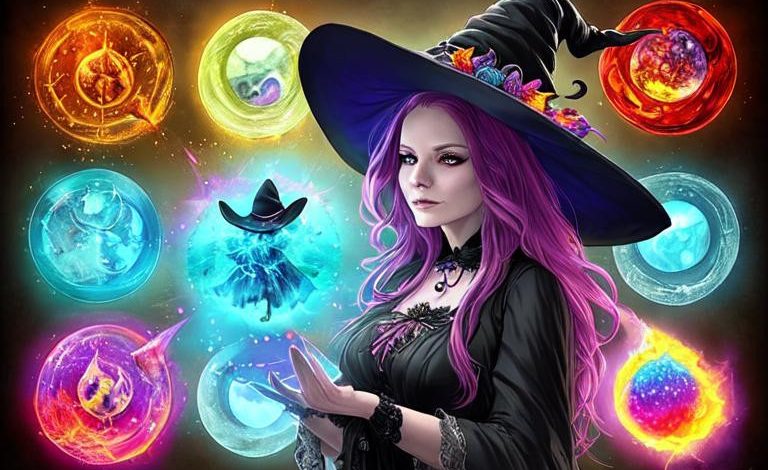
The Five Elements have long been associated with magic and witchcraft. These elements, also known as the five classical elements, are believed to represent different aspects of nature and the universe. Each element has its own unique energy and symbolism, and understanding these can help you harness their power in your own spiritual practice.
The Five Elements are Earth, Air, Fire, Water, and Spirit. Each of these elements is associated with a specific direction, season, and energy. The elements are also connected to the four cardinal points of the compass: Earth is associated with the North, Air with the East, Fire with the South, and Water with the West. Spirit, as the fifth element, is associated with the center.
Earth is the element of stability, grounding, and abundance. It is associated with the physical body, material possessions, and the natural world. The Earth element is often represented by rocks, crystals, and gemstones, as well as plants and animals. It is said to be the element that helps us connect with the physical world and our primal instincts.
Air is the element of communication, creativity, and intellectualism. It is associated with the mind, thought processes, and the realm of ideas. The Air element is often represented by birds, feathers, and incense smoke. It is said to be the element that helps us connect with our higher selves and the spiritual realm.
Fire is the element of passion, transformation, and action. It is associated with energy, vitality, and courage. The Fire element is often represented by candles, bonfires, and lightning. It is said to be the element that helps us connect with our inner power and the power of the universe.
Water is the element of emotions, intuition, and healing. It is associated with the flow of life, the subconscious mind, and the cycles of nature. The Water element is often represented by oceans, rivers, and rain. It is said to be the element that helps us connect with our deepest feelings and the energy of the universe.
Spirit is the element of transcendence, divinity, and the unknown. It is associated with the highest form of consciousness, the universal energy, and the divine. The Spirit element is often represented by prayer, meditation, and the void. It is said to be the element that helps us connect with the divine source of all creation.
Each of the Five Elements has its own unique energy that can be harnessed for spiritual growth and personal transformation. By understanding the symbolism and associations of each element, you can begin to tap into their power and incorporate them into your spiritual practice.
To work with the Earth element, you might choose to spend time in nature, meditate with crystals, or create an altar with natural materials. To work with the Air element, you might practice visualization, journaling, or perform a ritual with incense or feathers. To work with the Fire element, you might light candles, perform a bonfire ceremony, or practice energy work. To work with the Water element, you might take a ritual bath, work with divination tools, or spend time near a body of water. To work with the Spirit element, you might practice meditation, prayer, or engage in a spiritual practice that resonates with your beliefs.
As you begin to work with the Five Elements, you may find that certain elements resonate with you more than others. This is natural and is a sign that you are beginning to connect with the energies of the universe. By incorporating the elements into your spiritual practice, you can deepen your connection with the universe and tap into the limitless potential of the divine.
In addition to working with the Five Elements individually, you can also incorporate them into rituals and spells. For example, a spell for abundance might incorporate Earth elements such as crystals or herbs, while a spell for communication might incorporate Air elements such as feathers or incense. A spell for transformation might incorporate Fire elements such as candles or a bonfire, while a spell for emotional healing might incorporate Water elements such as a ritual bath or working with a divination tool. A spell for spiritual connection might incorporate Spirit elements such as meditation or prayer.
Incorporating the Five Elements into your rituals and spells not only adds depth and meaning to your practice, but also helps to align your intentions with the energies of the universe. By working with the elements, you can tap into their power and use it to manifest your desires.
The Five Elements are also often used in astrology, tarot, and other divination practices. Each element is associated with certain zodiac signs, tarot cards, and other symbols. By understanding these associations, you can deepen your understanding of the elements and how they relate to your own spiritual journey.
For example, the Earth element is associated with the zodiac signs of Taurus, Virgo, and Capricorn, as well as the tarot suit of Pentacles. The Air element is associated with the zodiac signs of Gemini, Libra, and Aquarius, as well as the tarot suit of Swords. The Fire element is associated with the zodiac signs of Aries, Leo, and Sagittarius, as well as the tarot suit of Wands. The Water element is associated with the zodiac signs of Cancer, Scorpio, and Pisces, as well as the tarot suit of Cups. Spirit is often associated with the tarot card of The Fool, as well as other symbols of transcendence and divinity.
By incorporating the Five Elements into your divination practice, you can gain a deeper understanding of the energies at play in your life and how to harness them for your own growth and transformation.
The Five Elements are also associated with different chakras in the body. Chakras are energy centers in the body that are said to correspond to different aspects of our physical, emotional, and spiritual selves. By working with the elements to balance and activate these chakras, you can promote healing and wellbeing in all areas of your life.
For example, the Earth element is associated with the root chakra, which governs our sense of safety, security, and groundedness. The Air element is associated with the throat chakra, which governs our communication and self-expression. The Fire element is associated with the solar plexus chakra, which governs our sense of personal power and confidence. The Water element is associated with the sacral chakra, which governs our emotions and creativity. Spirit is often associated with the crown chakra, which governs our spiritual connection and transcendence.
By working with the Five Elements to balance and activate these chakras, you can promote overall wellbeing and balance in your life.
The Five Elements are a powerful tool for spiritual growth and personal transformation. By understanding their symbolism and associations, you can begin to tap into their power and incorporate them into your spiritual practice. Whether you are working with the elements individually or incorporating them into rituals, spells, divination, or chakra work, the Five Elements offer a witchy and fascinating way to connect with the universe and manifest your desires.
Rituals for working with the Five Elements:
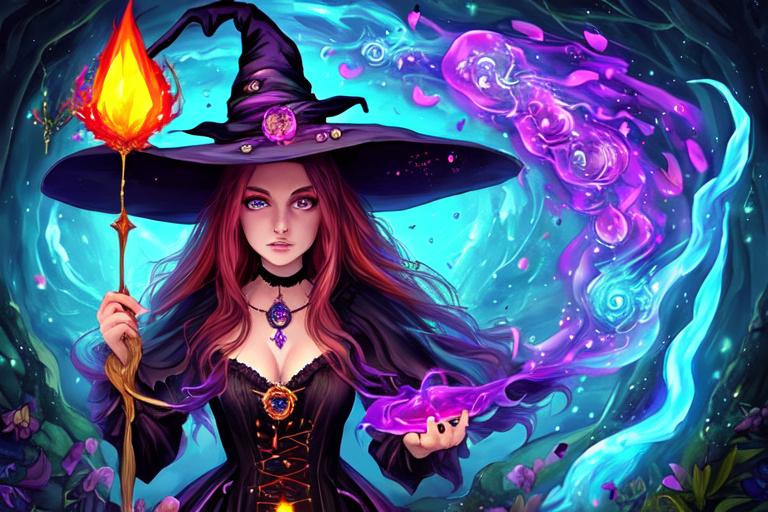
Working with the Five Elements is a powerful way to connect with the energies of the universe and manifest your desires. Incorporating the elements into your rituals can help you to tap into their power and use it to create transformation and change in your life. Here are some ideas for elemental rituals that you can use in your own practice:
Earth ritual: To connect with the grounding energy of the Earth element, you can create a ritual that involves working with crystals, herbs, or other materials that are associated with Earth energy. Start by creating a sacred space that feels safe and inviting. Then, place a large crystal or a piece of earthy jewelry at the center of your altar. Light candles or incense that have a grounding scent, such as patchouli or cedarwood. Spend time meditating on the energy of the Earth, focusing on your breath and your connection to the earth beneath your feet.
Air ritual: To connect with the transformative energy of the Air element, you can create a ritual that involves working with feathers, incense, or other materials that are associated with Air energy. Begin by creating a sacred space that feels light and airy. Then, light a candle or incense that has a light and uplifting scent, such as lavender or frankincense. Spend time meditating on the energy of the Air, focusing on your breath and the movement of the air around you.
Fire ritual: To connect with the passionate energy of the Fire element, you can create a ritual that involves working with candles, bonfires, or other materials that are associated with Fire energy. Start by creating a sacred space that feels warm and inviting. Then, light candles or a bonfire, and spend time meditating on the energy of the Fire, focusing on the warmth and passion that it brings.
Water ritual: To connect with the emotional energy of the Water element, you can create a ritual that involves working with water, crystals, or other materials that are associated with Water energy. Begin by creating a sacred space that feels nurturing and calming. Then, place a bowl of water or a piece of ocean-themed artwork at the center of your altar. Light candles or incense that have a calming scent, such as jasmine or ylang-ylang. Spend time meditating on the energy of the Water, focusing on the emotions and intuition that it brings.
Spirit ritual: To connect with the transcendent energy of the Spirit element, you can create a ritual that involves meditation, prayer, or other practices that are associated with spiritual connection. Begin by creating a sacred space that feels expansive and open. Then, light a candle or incense that has a transcendent scent, such as frankincense or myrrh. Spend time meditating or praying, focusing on your connection to the divine and the infinite.
In addition to these elemental rituals, there are many other ways to work with the Five Elements in your practice. Here are some additional ideas:
Elemental altar: Create an altar that incorporates the Five Elements, using different materials and symbols to represent each one. You can use this altar as a focal point for your rituals and meditations.
Elemental spellwork: Incorporate the Five Elements into your spellwork by using different materials, colors, and symbols that are associated with each element. For example, a spell for abundance might incorporate the Earth element by using green crystals or herbs.
Elemental divination: Use the Five Elements in your divination practice by associating each element with different tarot cards or symbols. For example, the Earth element might be associated with the suit of Pentacles, while the Air element might be associated with the suit of Swords.
Elemental breathwork: Use the Five Elements in your breathwork practice by focusing on the different qualities of each element as you breathe. For example, when you inhale, visualize yourself breathing in the energy of the Earth element, feeling grounded and supported. When you exhale, visualize yourself releasing any stagnant or negative energy.
Elemental yoga: Incorporate the Five Elements into your yoga practice by focusing on poses and movements that correspond to each element. For example, a pose that involves grounding your feet into the earth could be associated with the Earth element, while a pose that involves expansive arm movements could be associated with the Air element.
Elemental cleansing: Use the Five Elements to cleanse and purify your space by incorporating different cleansing methods that correspond to each element. For example, you could use sage or palo santo to cleanse with the Fire element, or sprinkle salt around your space to cleanse with the Earth element.
Working with the Five Elements can be a transformative and powerful practice that can help you to connect with the energies of the universe and manifest your desires. By incorporating the elements into your rituals and practices, you can tap into their unique energies and use them to create transformation and change in your life. Experiment with different elemental practices and see which ones resonate with you the most. Remember that the key to working with the elements is to be open, receptive, and willing to learn from their wisdom.
Elemental correspondences in spellwork
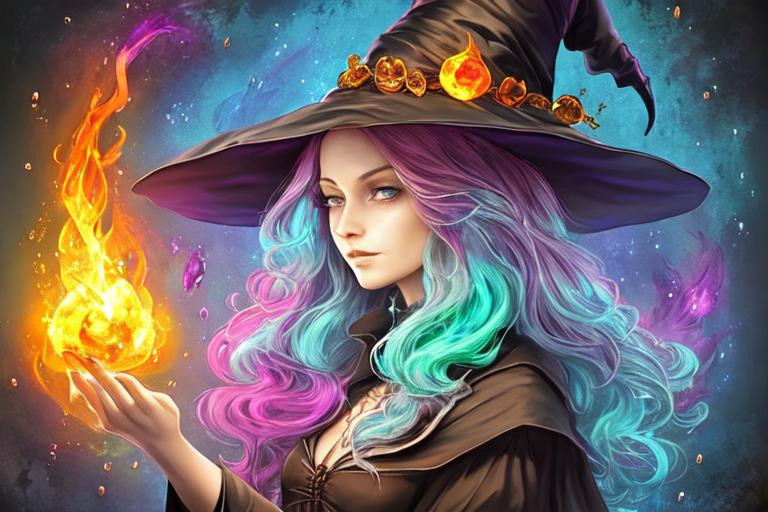
The Five Elements have long been associated with different aspects of life, and this has led to the development of elemental correspondences in spellwork. By understanding the properties of each element, you can incorporate them into your spells to enhance their power and effectiveness. Here are some examples of elemental correspondences in spellwork:
Earth:
The Earth element is associated with stability, grounding, and abundance. In spellwork, you can use the Earth element to manifest material wealth, stability in your home life, and a sense of security. Some correspondences for the Earth element in spellwork include:
Crystals: Green aventurine, moss agate, and jade are all associated with the Earth element and can be used in spellwork to promote abundance and stability.
Herbs: Dandelion, patchouli, and rosemary are all herbs that are associated with the Earth element and can be used in spells for grounding, prosperity, and protection.
Colors: Brown and green are colors that are associated with the Earth element and can be used in spellwork to promote grounding, stability, and abundance.
Astrology: The earth signs, Taurus, Virgo, and Capricorn, are associated with the element of earth. They are practical, grounded, and reliable, with a strong work ethic and a focus on material security. They can also be stubborn or resistant to change at times.
Tarot: The suit of Pentacles is associated with the element of earth. This suit is often depicted with imagery of coins or jewels, symbolizing material wealth, stability, and practicality. The Pentacles cards are often associated with work, finances, and physical health.
Air:
The Air element is associated with communication, change, and transformation. In spellwork, you can use the Air element to promote clarity of thought, communication, and mental agility. Some correspondences for the Air element in spellwork include:
Crystals: Clear quartz, blue lace agate, and citrine are all crystals that are associated with the Air element and can be used in spellwork to promote mental clarity, communication, and manifestation.
Herbs: Lavender, peppermint, and sage are all herbs that are associated with the Air element and can be used in spells for clarity of thought, communication, and manifestation.
Colors: Yellow and white are colors that are associated with the Air element and can be used in spellwork to promote mental clarity, communication, and manifestation.
Astrology: The air signs, Gemini, Libra, and Aquarius, are associated with the element of air. They are intellectual, communicative, and social, with a love of ideas and a desire for connection. They can also be indecisive or detached, and may struggle with emotional intimacy.
Tarot: The suit of Swords is associated with the element of air. This suit is often depicted with imagery of a sword or a bird in flight, symbolizing intellect, communication, and thought. The Swords cards are often associated with challenges, conflict, and mental clarity.
Fire:
The Fire element is associated with passion, energy, and transformation. In spellwork, you can use the Fire element to manifest passion, creativity, and transformation. Some correspondences for the Fire element in spellwork include:
Crystals: Carnelian, ruby, and sunstone are all crystals that are associated with the Fire element and can be used in spellwork to promote passion, creativity, and transformation.
Herbs: Cinnamon, ginger, and yarrow are all herbs that are associated with the Fire element and can be used in spells for passion, creativity, and transformation.
Colors: Red and orange are colors that are associated with the Fire element and can be used in spellwork to promote passion, creativity, and transformation.
Astrology: The fire signs, Aries, Leo, and Sagittarius, are associated with the element of fire. They are passionate, energetic, and driven, with a strong desire for adventure and excitement. They are also known for their fiery temper and can sometimes be impulsive or reckless.
Tarot: The suit of Wands is associated with the element of fire. This suit is often depicted with imagery of flames or a burning torch, symbolizing passion, energy, and creativity. The Wands cards are often associated with action, drive, and the pursuit of goals.
Water:
The Water element is associated with emotion, intuition, and healing. In spellwork, you can use the Water element to promote emotional healing, intuition, and psychic abilities. Some correspondences for the Water element in spellwork include:
Crystals: Amethyst, moonstone, and aquamarine are all crystals that are associated with the Water element and can be used in spellwork to promote emotional healing, intuition, and psychic abilities.
Herbs: Chamomile, jasmine, and rose are all herbs that are associated with the Water element and can be used in spells for emotional healing, intuition, and psychic abilities.
Colors: Blue and silver are colors that are associated with the Water element and can be used in spellwork to promote emotional healing, intuition, and psychic abilities.
Astrology: The water signs, Cancer, Scorpio, and Pisces, are associated with the element of water. They are emotional, intuitive, and empathic, with a strong connection to their feelings and the feelings of others. They can also be moody or easily overwhelmed by their emotions.
Tarot: The suit of Cups is associated with the element of water. This suit is often depicted with imagery of water or a cup overflowing with liquid, symbolizing emotions, intuition, and the unconscious. The Cups cards are often associated with relationships, feelings, and inner experiences.
Spirit:
The Spirit element is associated with transcendence, connection, and the divine. In spellwork, you can use the Spirit element to promote spiritual connection, meditation, and transcendence. Some correspondences for the Spirit element in spellwork include:
Crystals: Quartz, selenite, and amethyst are all crystals that are associated with the Spirit element and can be used in spellwork to promote spiritual connection, meditation, and transcendence.
Herbs: Frankincense, myrrh, and sage are all herbs that are associated with the Spirit element and can be used in spells for spiritual connection, meditation, and transcendence.
Colors: White and gold are colors that are associated with the Spirit element and can be used in spellwork to promote spiritual connection, meditation, and transcendence.
When using elemental correspondences in your spellwork, it’s important to remember that these correspondences are just a guide. You should always follow your intuition and work with the elements that feel most aligned with your intention. Additionally, it’s important to use your own energy and intention in your spellwork, as this is what ultimately drives the manifestation of your desires.
To incorporate elemental correspondences into your spellwork, you can start by selecting the elements that align with your intention and then choosing correspondences, such as crystals, herbs, and colors, that are associated with those elements. You can then incorporate these correspondences into your spellwork by using them in your rituals and spells.
For example, if you are doing a spell to manifest financial abundance, you might choose to work with the Earth element and incorporate correspondences such as green aventurine, patchouli, and brown or green candles. Alternatively, if you are doing a spell for clarity of thought and communication, you might choose to work with the Air element and incorporate correspondences such as clear quartz, peppermint, and yellow or white candles.
Elemental correspondences can be a powerful tool in your spellwork and can help you to manifest your desires more effectively. By understanding the properties of each element and incorporating correspondences that align with your intention, you can tap into the unique energies of the elements and use them to bring about transformation and change in your life. Remember to always follow your intuition and use your own energy and intention in your spellwork, as this is what ultimately drives the manifestation of your desires.
Elemental meditation practices
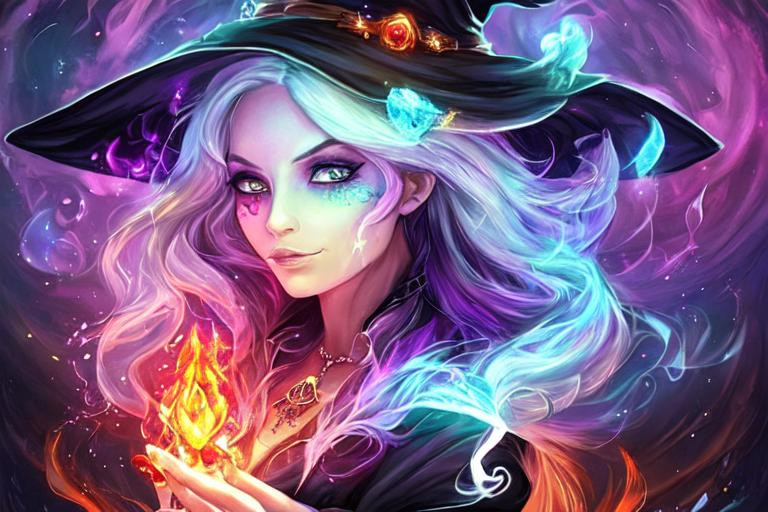
Meditation is a powerful tool for connecting with the elements and tapping into their unique energies. Through meditation, we can cultivate a deeper understanding of the elements and their role in our lives, as well as harness their energy to promote healing, balance, and transformation. In this section, we will explore different elemental meditation practices and how they can be used to deepen our connection with the elements.
Earth Meditation: To begin an Earth meditation, find a comfortable seated position with your feet firmly planted on the ground. Take a few deep breaths, and then visualize roots growing down from your feet and into the earth. Imagine that you are connecting with the earth’s energy and drawing it up into your body. As you continue to breathe deeply, visualize yourself surrounded by lush green foliage, rolling hills, and fertile soil. Imagine that you are one with the earth and feel the grounding energy of the element flowing through you.
Water Meditation: To begin a Water meditation, find a comfortable seated position and close your eyes. Take a few deep breaths and imagine that you are surrounded by a calm and tranquil body of water, such as a lake or a river. Visualize the gentle movement of the water and the reflections of the sun and clouds on its surface. As you continue to breathe deeply, allow yourself to sink deeper into a state of relaxation and let the soothing energy of the element wash over you.
Fire Meditation: To begin a Fire meditation, find a comfortable seated position and close your eyes. Take a few deep breaths and visualize a flame in front of you. Watch the flame dance and flicker, and feel its warmth and energy radiating towards you. As you continue to breathe deeply, imagine that you are surrounded by a warm and inviting fire, and feel its transformative energy igniting within you.
Air Meditation: To begin an Air meditation, find a comfortable seated position and close your eyes. Take a few deep breaths and imagine that you are standing on a mountaintop, surrounded by clear blue skies and a gentle breeze. Visualize the movement of the air and the sound of the wind rustling through the trees. As you continue to breathe deeply, let the calming energy of the element flow through you and clear your mind.
Spirit Meditation: To begin a Spirit meditation, find a comfortable seated position and close your eyes. Take a few deep breaths and imagine that you are surrounded by a glowing white light. Visualize the energy of the element flowing through you and connecting you with the divine. As you continue to breathe deeply, allow yourself to connect with your higher self and feel the spiritual energy of the element guiding you towards your highest potential.
Incorporating elemental meditation practices into your daily routine can be a powerful way to connect with the elements and promote healing, balance, and transformation in your life. You can choose to focus on one element at a time, or incorporate a different element into your meditation practice each day. Remember to always listen to your body and follow your intuition, as this will help you to connect with the elements on a deeper level and cultivate a more meaningful and transformative meditation practice.
The Elements and Feng Shui

Feng Shui is an ancient Chinese practice that involves arranging our living spaces in a way that promotes positive energy flow, or chi. One important aspect of Feng Shui is the use of the elements to create balance and harmony in our homes and workplaces.
In Feng Shui, there are five elements: wood, fire, earth, metal, and water. Each of these elements is associated with different qualities and attributes, and by incorporating them into our living spaces, we can create a more harmonious and balanced environment.
The wood element is associated with growth, vitality, and new beginnings. To incorporate the wood element into your space, you can use plants, wood furniture, or artwork depicting trees or forests.
The fire element is associated with passion, energy, and transformation. To incorporate the fire element into your space, you can use candles, bright colors, or artwork depicting flames or the sun.
The earth element is associated with stability, grounding, and nurturing. To incorporate the earth element into your space, you can use earthy colors, stones or crystals, or artwork depicting landscapes or mountains.
The metal element is associated with clarity, precision, and focus. To incorporate the metal element into your space, you can use metal furniture, mirrors, or artwork depicting metallic objects or machinery.
The water element is associated with flow, intuition, and emotions. To incorporate the water element into your space, you can use a fountain, fish tank, or artwork depicting water or waves.
By incorporating all five elements into our living spaces, we create a balanced and harmonious environment that promotes positive energy flow and supports our well-being. However, it is important to note that different spaces may require different elemental balances depending on their purpose and function.
For example, a bedroom may benefit from a stronger wood and water balance to promote growth and emotional well-being, while a home office may benefit from a stronger metal and earth balance to promote clarity and stability.
In addition to incorporating the elements into our physical spaces, we can also use them in other aspects of our lives. For example, we can wear jewelry or clothing that incorporates the elements we need to balance, or we can incorporate the elements into our meditation or yoga practice.
It is also important to note that the elements are not just physical objects, but also represent different energies and qualities within ourselves. By understanding and balancing these energies, we can create a more harmonious and balanced internal environment as well.
For example, if you feel stuck or stagnant in your life, you may need to incorporate more of the wood element to promote growth and new beginnings. Alternatively, if you feel scattered or unfocused, you may need to incorporate more of the metal element to promote clarity and precision.
Ultimately, the elements are a powerful tool for promoting balance and harmony in all aspects of our lives. By incorporating them into our physical spaces and internal selves, we can create a more harmonious and fulfilling life.
The Basics of the Five Elements
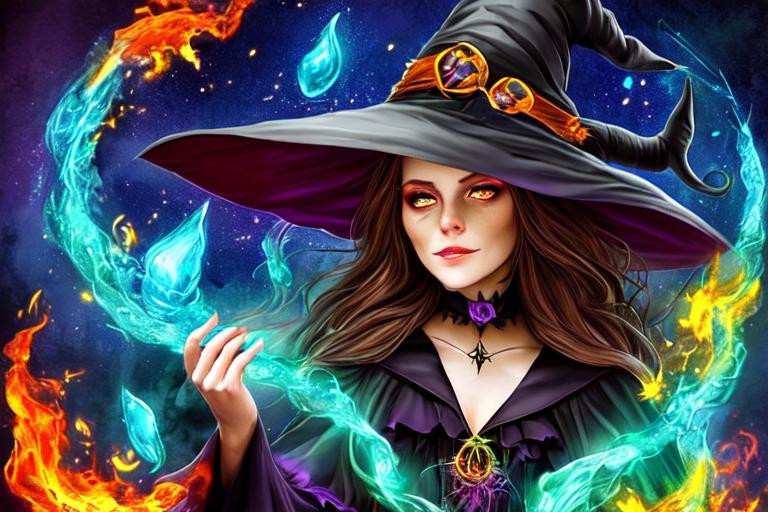
The Elements – In most instances when the elements are mentioned there are four, Earth, Air, Fire and Water, but there is another more elusive element which is difficult to describe or define, it is ether or spirit. Spirit is the fifth element, and the most ethereal of all the elements, it is a mystical and magical force that can neither be categorised nor explained. When spell casting or magic making, you are working with the symbolism and characteristics corresponding to each of the elemental energies.
Earth Element
The Earth element is the one most closely linked with our physical world, and the densest of all the elements. It governs, money, property, business, security, loyalty, responsibility and anything that is connected to the physical body and health, business affairs and finances. It is the feminine element of the Mother Goddess and stands for stability and growth, it is the foundation on which the other elements move. Earth is a receptive energy, helping us to accept responsibility and bringing to our attention limitations in our makeup, Earth’s season is winter, and it’s direction is north. In the natural environment Earth’s place is a cave, the symbol of shelter, the womb, rebirth, and the home of ancient oracles. Other places associated with the Earth element, are forests, valleys and fields. Earth governs the home and the areas of physical needs, such as the bathroom, and dining room, and practical tasks. It is the element of buildings, financial institutions, catering, gardening, farming, business and anything that requires working with the hands. Earth’s energy is grounding.
Earth personalities love to be surrounded by family and are quite tactile, they enjoy the pleasures of the senses and have a healthy libido. An over abundance of the Earth element slows things down and progress is slow, too little of the Earth element causes an inability to dare, take risks or branch out.
The deities Gaia, Pan and the Horned God, are associated with earth, Gaia is the ancient Greek Earth goddess, she was the first deity of the great oracle at Delphi. Pan was a shepherd in Greek mythology, he represents the spirit of untamed nature, he was an ancient god of wild things. The pagan horned god, the lord of the woods, is the consort of the Triple Goddess, he represents sexuality and vitality, and is depicted as half-man, half-animal, he is a hunter and identified with the sacrificed and hunted animal.
Air Element
There is a delicate balance between the four elements which make up the universe, practitioners of magic work with these elemental energies and their particular characteristics. Air governs the realm of the mind and all mental activity, it is the most ethereal of the elements. Air’s direction is east, and it’s season is spring. As it is the element of the wind, Air governs all movement, and is associated with travel, freedom, thought, ideas, intellect, imagination and discovery. Areas governed by Air are meeting rooms, schools, libraries, airports, railway stations and bus terminals. It is connected with mathematics, science and the law. Air’s places are mountain tops, windy plains, clear or cloudy skies, and the Air element presides over the eastern quarter of a room or building.
Air personalities are rational and analytical, they are clear thinkers and don’t rush into things, enjoying mental stimulation, a good debate, and an exchange of ideas. Too much Air makes for a judgemental and critical outlook, with a pedantic attitude towards all things. These personalities can put the damper on creative ideas in their early stages, without any rational. An overabundance of the Air element and a person can live in a fantasy world, given to ideas that have no substance. They can approach something that is untenable and be blind to the pitfalls.
The deities associated with Air are Shu, Thoth, Hermes and Mercury. Shu was the Egyptian god of the Air, who with his consort Tefnut (the goddess of moisture) created the earth and sky. Thoth was the Egyptian moon god, he was god of wisdom and the keeper of secret knowledge, and it was said that his book contained all the wisdom of the world. Hermes was eloquent and inventive, with a lively mind and a quick wit, he was the patron of thieves, merchants and travelers. He was associated with the Greek god Hermes, messenger of the Olympian gods, who could travel as fast as thought.
Fire Element
The Fire element is associated with the sun, the giver of life, it governs passion, intensity, desire, intuition, understanding, imagination, and possibilities. Fire cleanses and purifies it is also creative and destructive, and it can consume everything in it’s path, it is the only one of the four elements that cannot exist without feeding on something else. If offers warmth and cooks food, but can get out of control, it has the power to transform everything it touches.
Fire rules the south and is related to motivation, creativity and passion, it has a fast and forceful power and energy, it is positive and uplifting but can be frightening if it gets out of control. It is the creative spark within us all, it promotes courage and strength, helping us to fight for what we want.
Fire personalities are charming, charismatic and passionate, they live life to the full, and rely heavily on their instincts and intuition. Their strengths are creativity and leadership, they are daring and bold in their career, and love life, liking stimulation, and challenge, in both areas. Too much fire can be destructive because no boundaries are imposed, leaving the fire entity worn out and off balance. An overabundance of fire leads to selfishness, egocentricity, and unrealistic expectations of others. Too little fire leads to low energy and a lack of motivation.
The deities associated with Fire are Re, Sekhmet, Apollo and Lugh. Re was a creator god worshipped by the ancient Egyptians, he brought order out of chaos, and his tears formed the first human beings. He was reborn each morning, and journeyed across the sky in his solar boat, each night he entered the underworld to do battle with the cosmic serpent Apep. In Greek mythology Apollo was the god of medicine and music, he guided the sun across the sky, and represented light, truth and clarity. He was patron of the nine Muses, the mythical embodiments of the creative imagination. Lugh the Celtic sky god, was a deity of the sun and the weather, his spear was seen as a fork of lightening.
The Water Element
The Water Element affects the subconscious, emotions and dreams, it is the element of love and emotions. Constantly active beneath the surface, influencing our moods and emotional responses. The energy of water rules the west and its season is autumn, it purifies, heals, offers emotional release, and removes all that is stagnant. The energy of Water is feminine and is symbolised by the womb, it is related to fertility.
Within the home the bathroom and kitchen sink are ruled by Water, it also governs the living room, the area of social activity. Water is the element of medical environments, and the healing and caring professions. Its places are seas, lakes, rivers, marshes, wells, pools, and areas where the land is rain-drenched
Water personalities are spiritual, emotional, sensitive and very intuitive, often becoming involved in psychic work or mediumship. They approach life from a feeling perspective, rather than a thinking one, and can be quite spontaneous. In relationships they are empathetic and nurturing, but can be touchy. Too little Water makes them emotionally distant, with an inability to express themselves, causing them to keep people at arm’s length. In this instance they would be less empathetic, intuitive and psychic. Too much Water, takes all emotions to the extreme, making day to day functioning in the world difficult and possibly causing psychic overload.
The deities associated with Water are Tiamat, Venus, Neptune and Epona. Tiamat in Mesopotamian mythology, represents chaos and the energy of the ocean, she was the primeval mother whose salt waters mingled with the fresh water of Apsu to initiate the creation of the gods. Neptune was the Roman god of the sea, with a fearful temper, his moods created terrible storms. In Greek mythology, Venus was the archetype of love and beauty. Created by the foam of the sea, she had the ability to calm the sea and ensure safe voyages, just as she brought balance and harmony, to human emotions and instincts. Epona was a Celtic goddess of Water and healing, and the presiding deity of healing springs. She was associated with fertility and the earth’s abundance.
The Spirit Element
The fifth element is spirit, in the Sanskrit language is akasha, from this comes the “akashic records,” which is a record of all knowledge pertaining to the material plane, it exists in the astral world. Ether was referred to as the quintessence in the middle Ages, meaning fifth. The alchemist’s quest was to find this fifth essence, which they believed contained the secret of everlasting life. Ether was described as the substance that made up the heavens.
The qualities of spirit are expressed through art, music, writing, religion, healing, magic and ritual. Spirit is associated with the crown, or 7th chakra, in the Tarot deck it is represented by the last card of the Major Arcana, The World. Spirit colours are white and/or black, they are the colours that contain or reflect all other vibrations of light and dark. Each culture has its own definition of spirit, In Buddhist tradition it is likened to a dewdrop disappearing into the ocean of infinite being.
Spirit is the most difficult element to describe, it is everywhere and nowhere, and is the force that unites all things, in rituals it is our connection to the otherworld. The spirit element transports us beyond any narrow confines and allows us to open up to something much bigger, it is present in all aspects of life, and goes beyond thought and emotion. Unlike the other four elements it has no defined place or location, even though we cannot specifically place it, we know it is there.
Final Musings
As witches, we understand the power and importance of the elements in our practice. They are the building blocks of our magic, and the forces that shape the world around us. By working with the elements, we can tap into their energy and use it to manifest our desires, connect with the divine, and promote healing and transformation in our lives.
It is important to remember that the elements are not just abstract concepts, but living forces that are present in everything around us. They are the air we breathe, the water we drink, the earth we walk on, and the fire that warms us. By connecting with these elemental forces, we can deepen our understanding of the world around us and our place within it.
Whether you are working with the elements through ritual, spellwork, meditation, or simply by spending time in nature, it is important to approach them with reverence and respect. Take the time to connect with each element and understand its unique energy and characteristics. Listen to your intuition and let the elements guide you on your path.
Remember that the elements are not just tools for our magic, but also teachers that can help us to grow and evolve as witches and as human beings. By working with the elements, we can cultivate a deeper connection with the natural world, and tap into the wisdom and power of the universe.
So, let us embrace the magic of the elements, and let their energy flow through us. Let us honor their power and wisdom, and use them to create a better world for ourselves and for future generations. As witches, we have the power to shape our reality and manifest our dreams, and the elements are our allies in this journey. May we always work with them in harmony and balance, and may our magic be a force for good in the world.



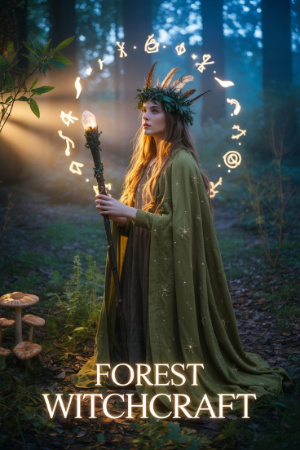

2 Comments
where are the share buttons?
Hello, Share buttons have been enabled 🙂